
Steve Reinke’s Excuse of the Real
In this exclusive two-week screening of the first installation of The Hundred Videos, watch the artist’s satirical challenge to traditional documentary form.
Feb 16, 2022
Steve Reinke’s Excuse of the Real screened here February 16–March 2, 2022. The video is no longer available for streaming. Join us for the next Hyundai Card Video Views screening, beginning March 9, 2022.
Made on a limited budget, Steve Reinke’s multiyear project The Hundred Videos, reflects a moment in the late 1980s when the declining costs of video production made it possible for young artists to work quickly and inexpensively in the medium. Instead of aiming to produce a single long-form masterpiece, Reinke used The Hundred Videos as a moving-image sketchbook, a space for experimentation across a series of short-form works. While the videos draw upon many sources—combining lo-fi original footage with archival, pop-cultural, and pornographic imagery—they are united by Reinke’s droll narration. His voice-overs offer observations and stories that are apparently unrelated to the images on screen, articulating the artist’s skepticism about the conventions of documentary filmmaking.
In Excuse of the Real (1989)—the first of The Hundred
I recently spoke to Reinke over Zoom about how this work was developed, and how it fits into The Hundred Videos. Join us in March for the next installment of the Hyundai Card Video Views series, which considers artists’ engagement with a technology that has become central to our daily lives.
–Brandon Eng, Mellon-Marron Research Consortium Fellow, Department of Media and Performance Art
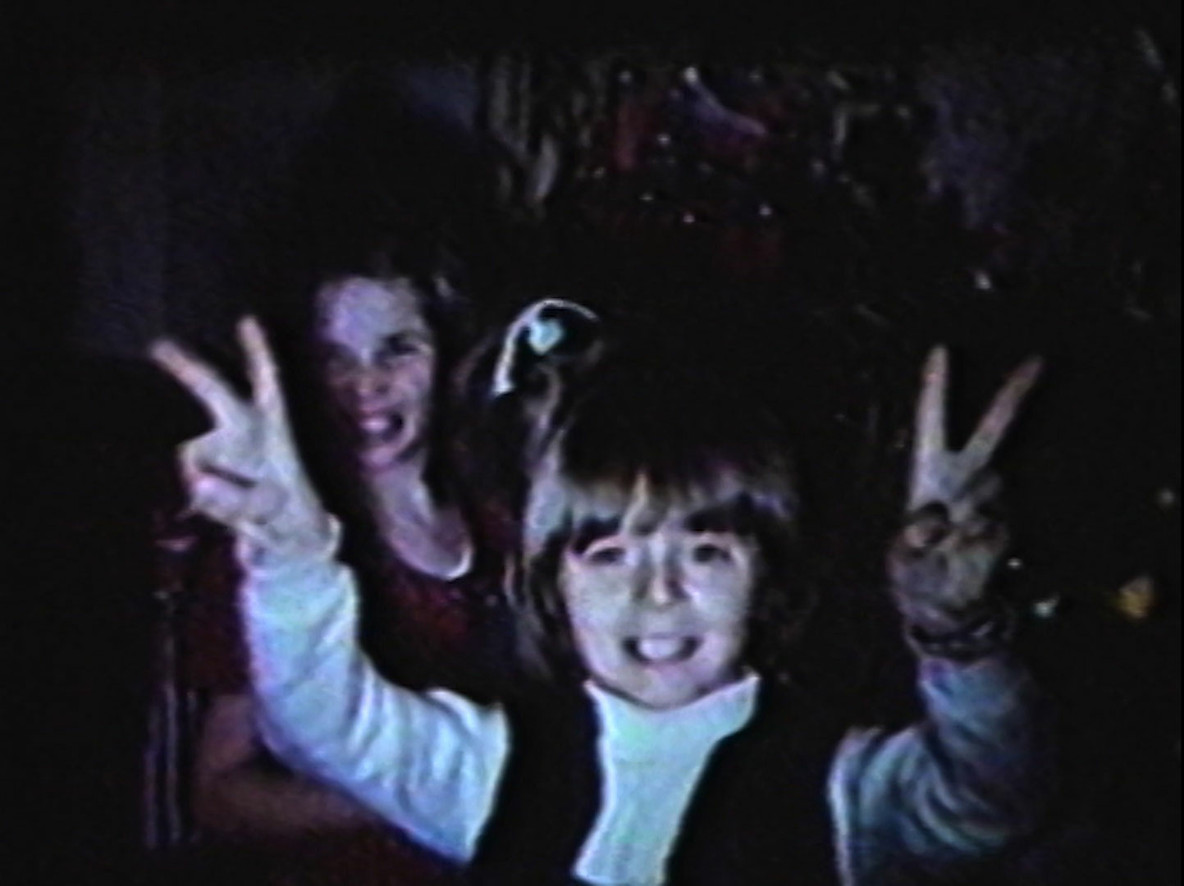
Steve Reinke. Still from Excuse of the Real from The Hundred Videos. 1989
Brandon Eng: Steve, can you describe the origin of Excuse of the Real?
Steve Reinke: It’s the first video in a project that became The Hundred Videos. I made it in 1989, so I would have been 26. I had found my voice, but hadn’t yet discovered how it could work in a video with a more complex context. Excuse of the Real was the first video I made that was the kind of work I wanted to pursue and put into the world. So for me, it’s my first video.
The first section of the video is a montage of home movies focusing on children, and your voice-over describes a storyboard for a hypothetical documentary project about AIDS. How would you characterize the narrator’s relationship to the AIDS crisis?
Like a lot of my narrators, especially then, this narrator is working with a particular kind of satirical voice. I would say that the video is less about exposing anything about AIDS than about a certain kind of documentary production, or documentary truth itself. But of course there was no way, especially in 1989, to not have a visceral reaction to the AIDS crisis. I could have chosen a more neutral subject, but for me, I chose the hottest issue because for a viewer there was no way to escape establishing a relationship to that.
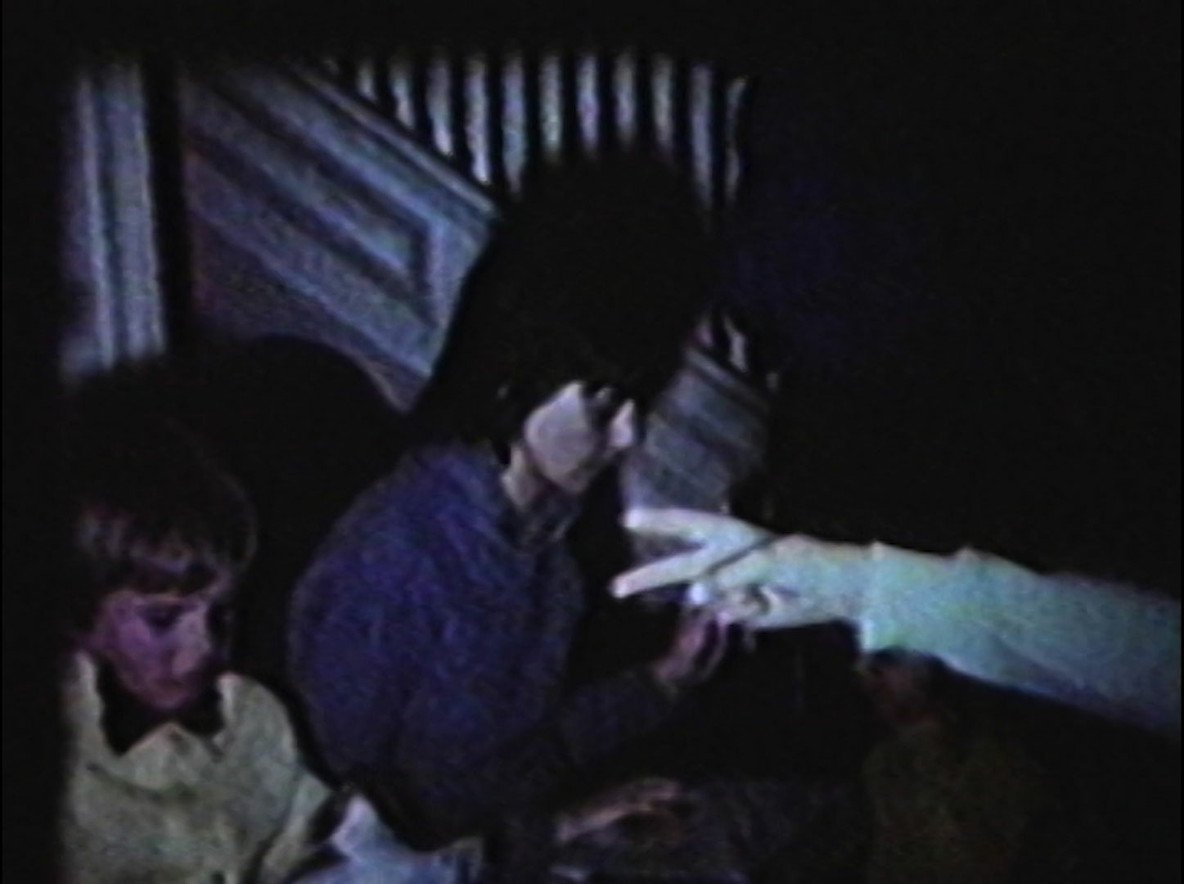
Still from Excuse of the Real
Can you talk about the process of making the first section of the video? Where did you source the home movies?
It’s funny—the narrator says that it doesn’t matter where they came from because everyone’s home movies are the same. But I might reveal now what I haven’t ever said: they are actually home movies of my family. I use home movies very often, and this might be the only video that uses home movies of my family.
I think that’s really fascinating because it explores the question of whether the narrator is a separate character from you.
Yeah. Later on, this question gets confusing even to me. I’d like to maintain that the narrator is not me, but often, in other videos, it more or less is.
Several of the home movies loop in short intervals, almost like GIFs. Can you talk about the effects that these repetitions were supposed to have on the viewer?
It took me many years to learn how to edit and think about editing. So this is kind of a raw, youthful work. I think the repetitions were meant to destabilize. They were used basically for the affect, to make the viewer feel a little bit of anxiety produced by the somewhat unpredictable repetitions. I often set up a pattern and then break the pattern of how things loop.
One of the challenges in monologue-based videos is getting a handle on the way that the rhythm of the voice and what the voice is saying is enhanced, or not enhanced, by the rhythm of the visuals and the other things on the soundtrack. So it’s really a way to intuitively underline a way to receive the voice, because listening to a voice while you’re seeing images and hearing other sounds is very different from reading. So this was the beginning of my trying to do that.
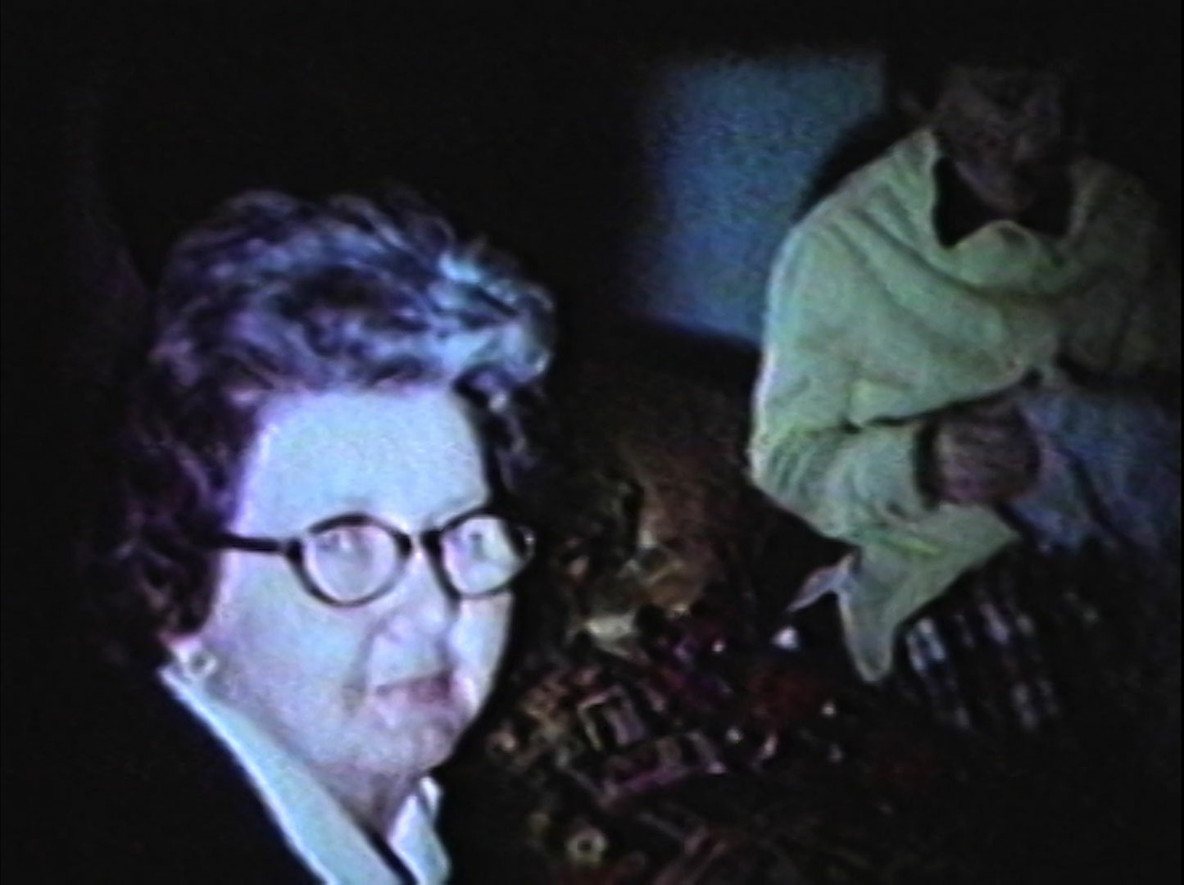
Still from Excuse of the Real
Can you talk about making the second part of the video, in which a man appears and tells a story about making his way home drunkenly from a party?
One of the things that I do a lot in The Hundred Videos is to create two parts. In the first part, the narrator proposes something, and in the second, you get something in relation to what was proposed. Sometimes there’s a clear relation. In this video, one presumes that the second part is footage from the documentary portrait of the guy dying of AIDS. But they’re meant to never quite line up. This was meant to simply be a turn to the lyrical as a way to conclude the satire of the first part.
The speaker is my friend, Robert Chandler, who helped me technically with the video. We recorded the voice-over at Ryerson, which was then a polytechnic, where he was going to school, on audio equipment that had belonged to Glenn Gould. The way that Bob speaks and looks is very different from me, but the text is something that I could have easily said. I like to play with the idea that texts can roam with different bodies, different subjectivities.

Still from Excuse of the Real
I’m curious about how the themes from this work are expanded or continue into the rest of The Hundred Videos.
There’s a wide variety of approaches in The Hundred Videos, but there are also things that are pretty constant. One is the use of a first-person voice-over, which is quite a friendly approach to the audience, a more personal approach. I think of myself having a Muppet-type voice—a comforting, approachable voice that can say a variety of things that may be horrible, or things that one would not usually say. So it began with that ironic, satirical approach. And also working fast and quick and cheap. That’s important too.
That leads me to my next question. Can you talk a little bit about what video and filmmaking was like in Canada at the time, when you were a student at York University?
In Canada at that time, video art had become very institutionalized and professionalized. A video artist was someone who made a piece that was 40 to 50 minutes long, and it would take them two or three years to complete. It would combine an approach of documentary and fiction. It would have a certain budget. It would get its money from each of three levels of government. And it would play at these places in Canada, and then some of them would play internationally.
And I was not interested in that. At this time, you had to pay for editing, but video was still a really cheap way to work. I was interested in the way that it could be a fast, more immediate medium, and I took a more scattershot approach. So while some of The Hundred Videos are really quick and fast, others actually took a lot of time in preparation. There’s a combination of approaches, but I wanted video to have the same conditions as writing, where you only need a piece of paper and a pen, and then there’s a kind of freedom.
When was Excuse of the Real first shown publicly, and how was it received?
Initially, it was shown at some key festivals, and it got mixed reactions, although audiences did laugh. I remember that at the end of a screening in Chicago, a man obviously dying of AIDS came up in a wheelchair and said to me, “I did not find your video in the least bit funny or amusing.” At first I was like, “Oh, my God, I guess he’s right!” And then I thought, “No, I’m going to keep doing these.” I wasn’t making fun of AIDS in the video, and I decided that this kind of satiric approach to things was important. So that encounter became pivotal. It solidified for me that I was going to keep working in this way despite the fact that people might be offended.
Looking back at Excuse of the Real from the vantage of 2022, how do you feel about it?
The first time I remastered and digitized The Hundred Videos, I changed a few of them, including Excuse of the Real. I tightened up some of the editing and did other stuff, and realized immediately that it was a mistake and regretted doing it. So when the technology changed again and the videos could be remastered digitally at a higher format, I remastered them again exactly as they were, which seems the right way to go.
These days I don’t look at them that often, and there’s also a tremendous difference between looking at them in my room and seeing them with an audience, especially since they rely so much on humor and shock. They’re made to be seen publicly. To be honest, I don’t know what I think about my old work. But this one doesn’t embarrass me. I still like this one.
Media and Performance at MoMA is made possible by Hyundai Card.
Major support is provided by MoMA’s Wallis Annenberg Director’s Fund for Innovation in Contemporary Art.
Generous funding is provided by the Lonti Ebers Endowment for Performance and the Sarah Arison Endowment Fund for Performance.
Related articles
-
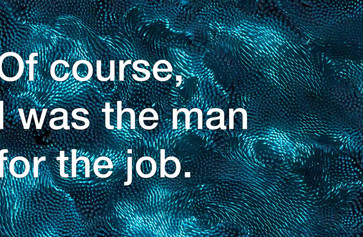
Hyundai Card Video Views
Tony Cokes’s The Will & The Way... Fragments 1 and 2
In this exclusive two-week screening, watch the artist examine the life of a groundbreaking architect.
Jan 12, 2022
-
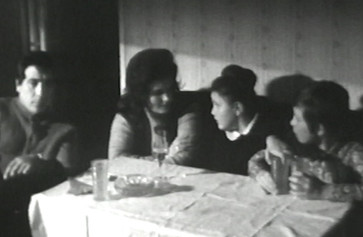
Hyundai Card Video Views
VALIE EXPORT’s Facing a Family
In this exclusive two-week screening, watch the artist use our televisions to look back at us.
Dec 21, 2021

